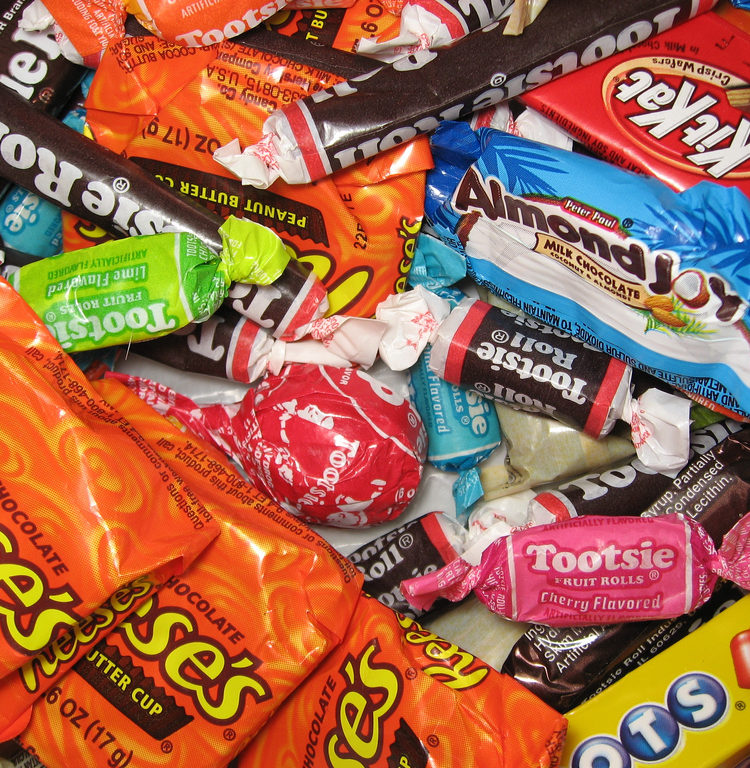What we eat plays a crucial role in so many aspects of our lives, including how we feel both mentally and physically. I think we might often underestimate how important it is to fuel our bodies with the right foods to not only help us feel our best but to also be able to do all the things we want to do.
Part of a healthy diet is eating fruits and vegetables. While this is easy for some, it can be difficult for others. Some people prefer fruits, while others are veggie lovers. I tend to lean more on the fruit side, but I also have some favorite veggies. The daily consumption recommendations from the experts can be confusing too:
- The CDC (Center for Disease Control) recommends eating 1 1/2 to 2 cups of fruit and 2 to 3 cups of vegetables a day.
- The American Heart Association recommends 4 servings of fruits and 5 servings of vegetables a day. What’s a serving? Learn how they classify a serving here, and it can be different based on how a food is prepared (fresh, raw, frozen, canned, dried, juiced).
- The USDA Dietary Guidelines for Americans recommends fruit and vegetable intake depending on our daily calorie consumption. (refer to page 96)
- The WHO (World Health Organization) recommends 5 servings of fruits and vegetables (that’s 5 servings total) a day.
No matter which recommendations we follow, the one thing they have in common is that eating fruits and vegetables every day is important.
Benefits of Fruits + Vegetables
We’ve been taught to eat our fruits and vegetables for as long as we can remember. But why? Fruits and vegetables provide our bodies with macronutrients (protein, carbohydrates, and fats), micronutrients (vitamins and minerals), and the fiber that’s so important for digestive health. But their benefits go way beyond those important things:
- Keep blood pressure at a healthy level
- Reduced risk of Type 2 diabetes
- Lower risk of heart disease and stroke
- Help with weight management
- Improved eye health
- Reduced risk of some cancers
- Contribute to gut health, and since our gut has been called our “second brain,” gut health is crucial to both mental and physical health.
12 Simple Tips for Eating More Fruits and Vegetables
Whether you’re a fruits and vegetable lover or not, it can sometimes be tricky to eat the amounts we need for optimal health. Here are 12 super simple tips to help you include more fruits and vegetables in your day:
- Include a fruit and/or vegetable with every meal. This is probably one of the easiest ways to up your daily serving count.
- Get colorful. Aim to eat the colors of the rainbow since each color of fruit or vegetable contains different vitamins and minerals.
- Make a smoothie. Here’s my favorite recipe, and it gives me 2+ servings of fruits and vegetables + protein from the Greek yogurt.
- Replace pasta with spaghetti squash or other noodled squash. One of my favorites is combining spaghetti squash with some marinara sauce (bonus veggies!), some cut up meat (chicken, beef, or pork), and some grated parmesan cheese. It’s a great way to use leftover meat, and it’s a one-dish (or bowl, in my case) meal.
- Load up a pizza with vegetables. Get creative! You might find some pizza-loving vegetables you hadn’t thought of before.
- Prep vegetables so they’re easy to grab ‘n go. Taking a few minutes to wash and cut your produce can make it easier to eat them (especially on crazy, busy days) and you’ll also waste less. How often have you bought some produce and then it sits in your fridge until you have to throw it out? Me too.
- Try something new. You might find a new favorite!
- Keep fruits and vegetables front and center on kitchen counters and in the fridge so you’re more apt to grab them instead of something less healthy.
- Shop in season. Not only will seasonal produce be higher quality, but it’s also usually less expensive. Click here for a seasonal produce guide.
- Try riced cauliflower. It tends to absorb the flavors of the foods it’s with, so you really can’t taste the cauliflower taste so much. I love cauliflower, so I love this option! And you might be surprised at what you’ll find when you compare the nutrition information of riced cauliflower and white or brown rice:
Riced cauliflower (cooked, 1 cup serving):
Calories: 20
Carbs: 4 grams (2 grams of fiber)
Protein: 2 grams
Fat: 0 grams
White rice (cooked, 1 cup serving):
Calories: 205
Carbs: 44.5 grams (.6 grams of fiber)
Protein: 4.3 grams
Fat: .4 grams
Brown rice (cooked, 1 cup serving):
Calories: 216
Carbs: 44.8 grams (3.5 grams of fiber)
Protein: 5 grams
Fat: 1.8 grams
- Put some peanut butter on some celery and enjoy! While I know this snack has been around for decades, it’s become one of my favorites lately. I get the deliciousness of peanut butter with the crunch I’d get from other, less nutritious snacks. #winwin!
- Start small. If you struggle to eat fruits and vegetables, set a goal to eat one more serving a day. When you can do that regularly, add another serving a day and so on. Eating some fruits and vegetables is way better than eating zero fruits and vegetables!
One of my goals is to eat a combination of 5 fruits and vegetables each day, and since I’m definitely a creature of habit when it comes to my meals (except for dinner), this is how I’m nailing this goal every single day:
- Breakfast: 1 cup of berries on top of my bran flakes = 2 servings of fruit
- Lunch: Favorite smoothie with 2 handfuls of spinach and 1 cup of frozen mixed fruit = 2+ servings
- Afternoon snack: 2 stalks of celery with 1 tablespoon of peanut butter spread on the stalks OR a banana or a carrot and a protein source = 1 serving
Then I’ll still have a serving of fruit or vegetable for dinner because an extra serving never hurts and it’s good to add some variety too.
My breakfast stays the same 99.9% of the time, and when I do change up my lunch and afternoon snacks, I still try and eat at least one serving of fruit or vegetable for each, leaving 1 serving for dinner. Which is totally doable!
Fruits and vegetables can be a delicious way to give a boost to our physical and mental health. Which tip will you try first?






Leave a Reply